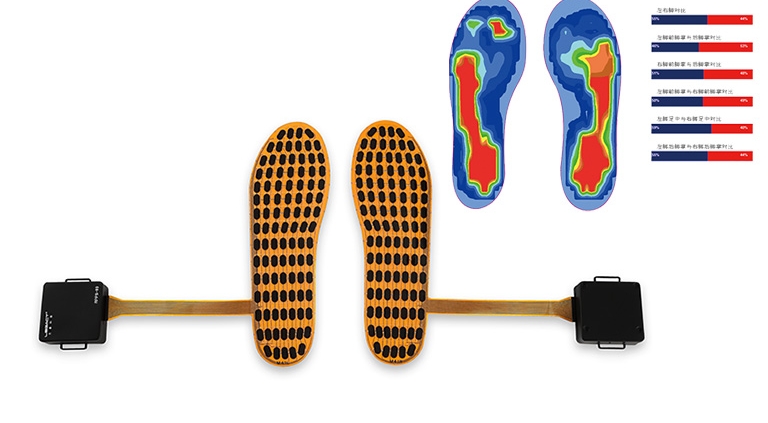Foot pressure distribution refers to the distribution of pressure on different parts of the foot when standing, walking, or running. Understanding and analyzing foot pressure distribution is crucial for preventing foot diseases, improving athletic performance, and aiding in rehabilitation.
Importance of Foot Pressure Distribution
Preventing Foot Diseases: Uneven foot pressure distribution can lead to or exacerbate certain foot conditions such as plantar fasciitis, metatarsalgia, and diabetic foot ulcers. By monitoring foot pressure distribution, abnormal pressures can be detected early, allowing for timely interventions to prevent the onset and progression of foot diseases.
Improving Athletic Performance: For athletes and fitness enthusiasts, analyzing foot pressure distribution can help optimize gait and posture during training and competition, thereby enhancing efficiency and performance. Understanding foot pressure distribution can identify poor movement habits, allowing for adjustments to reduce the risk of injury.
Aiding in Rehabilitation: In rehabilitation, monitoring foot pressure distribution is crucial for post-surgical recovery and functional training. Analyzing foot pressure can help create personalized rehabilitation plans, promoting faster recovery. Additionally, dynamic monitoring of foot pressure distribution can assess rehabilitation progress and adjust treatment strategies as needed.
Methods of Measuring Foot Pressure Distribution
Common methods for measuring foot pressure distribution include:
Pressure Mats: Pressure mats are sensor pads placed on the ground or inside shoes, capable of recording pressure distribution across different parts of the foot in real-time. They offer high measurement accuracy and are suitable for both dynamic and static pressure monitoring.
Pressure Insoles: Pressure insoles are sensor-equipped insoles that continuously monitor foot pressure distribution during daily activities. Their portability and comfort make them ideal for personal health management and sports analysis.
3D Scanning and Imaging Technology: 3D scanning and imaging technology can accurately capture foot morphology and pressure distribution, often used in clinical diagnosis and footwear design. These technologies provide high-resolution images of foot pressure, aiding in detailed analysis and diagnosis.
Applications
Medical Diagnosis and Treatment: Doctors can use foot pressure distribution data to diagnose foot problems and develop targeted treatment plans, such as custom orthotics or physical therapy.
Sports Training and Analysis: Coaches and sports scientists can analyze athletes’ gait through foot pressure distribution, optimizing training plans, improving performance, and preventing injuries.
Footwear Design and Manufacturing: Footwear designers can use foot pressure distribution data to create ergonomically designed shoes, enhancing comfort and functionality.
Conclusion
Research and application of foot pressure distribution are significant in preventing foot diseases, improving athletic performance, and aiding in rehabilitation. As technology advances, methods for measuring foot pressure distribution will become more precise and convenient, providing stronger support for health management. By effectively utilizing these data, we can better understand foot health, implement scientific interventions, and enhance overall health levels.



